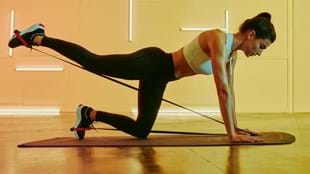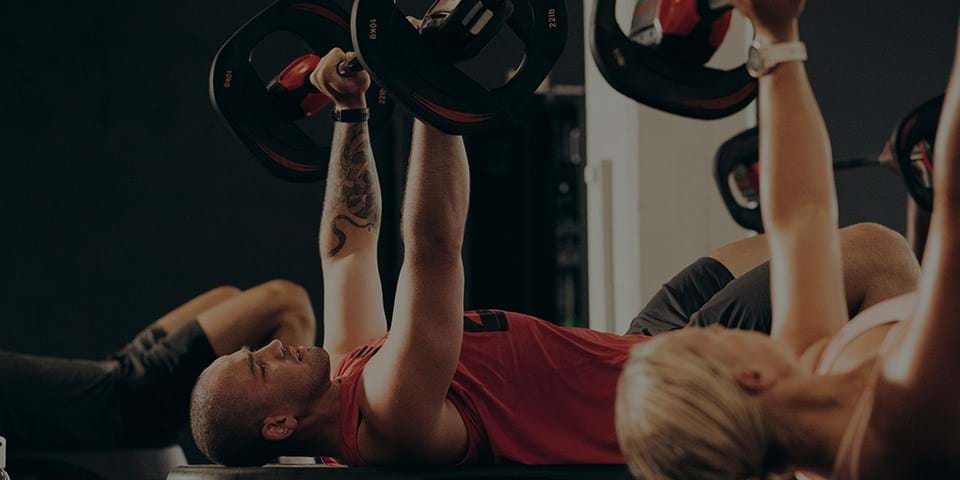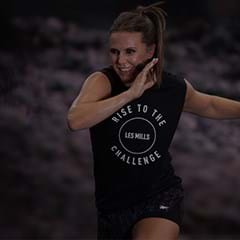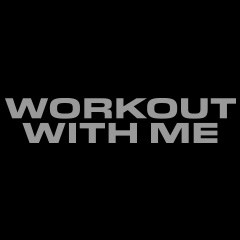Hands up if you’ve done some unilateral training this week?
Chances are, even if your hand didn’t move, you actually have. If you did BODYATTACK™, you probably did some unilateral exercises in Track 5 Athletic Strength; if you did CXWORX™, you probably did some single-leg training in Track 4 Standing Strength; and if you did BODYCOMBAT™, you will probably have done some kind of unilateral movements in several tracks! In fact, most Les Mills programs include some form of unilateral training, whether it’s Warrior 3 Pose in BODYBALANCE™/BODYFLOW® , or a Single Arm Burpee in LES MILLS GRIT™.
As I’m sure you know, unilateral exercises are single-leg or single-arm movements that we use to train both sides of the body equally (hence why we always perform the same number of repetitions, to the same timing, on both sides). In BODYATTACK UNITED, Lisa Osborne has shone a spotlight on unilateral training, including several moves in tracks 5 (Athletic Strength) and 6 (Running) to deliver the benefits of this type of training.
So why is it so good for us?
AVOID OVERTRAINING OR OVERUSING THE DOMINANT SIDE
Most of us will naturally have one side of the body that is stronger than the other. However, this imbalance can cause two issues for us.
One: The dominant side overcompensates for the weaker side, which can widen the gap in strength between the two sides. If you’ve ever done heavy weightlifting and found you’re more sore on one side than the other, it means the dominant side did most of the work. This can prevent our weaker side from catching up.
Two: Instead of the dominant side working harder, we may end up recruiting different muscles on our weaker side that we don’t want to use. For example, in a heavy chest press, the target muscles are our chest and triceps. As we start to fatigue, if one side is weaker than the other, we might end up using our shoulders or back to finish the set, rather than those muscles we are seeking to train.
ISOLATE AND CORRECT MUSCLE IMBALANCES
As above, if one side of your body is stronger than the other, this side will always be dominant when performing bilateral exercises (using both limbs). For example, when performing bodyweight squats: if your right leg is stronger than your left, your weight will mostly be carried by your right side, causing your left leg to be underutilized. If you change from bodyweight squats to a single leg squat (unilateral exercise) then both sides of the body are being worked independently.
IMPROVE BALANCE AND ENGAGE OUR CORE
Want a strong core? Do some single-limb exercises! A 2012 study in the European Journal of Applied Physiology found unilateral exercises activate the muscles of the superficial core more effectively than bilateral exercises.
Single-leg exercises recruit the deep stabilizers of the hip and core to improve our balance. Similarly, when we perform unilateral movements of the upper body, the core must be engaged to prevent the trunk from rotating unnecessarily during a push or pull exercises.
ASSIST IN REHABILITATION
Unilateral training is more effective for rehabilitation than bilateral training because when you train one side of the body, you also stimulate the opposite side. This is called cross-education of the muscles: we indirectly stimulate the non-working side of the body to improve strength in the injured area. This occurs because the neural pathways that are used for the primary unilateral exercise also stimulate the same muscles on the other side of the body. So when you target your right quadriceps with a unilateral exercise, you will also gain strength in the left quad.
DO YOU NEED TO DO MORE UNILATERAL EXERCISES?
Try these exercises at home to test your own muscular balance!
Single Leg Squat: tests glute, hip and quad strength
To check for imbalance:
- Look at the knee angle of your grounded leg
- When you squat down, your knee should ideally face straight ahead, with your thigh in a straight line
- If your knee is deviating away from the mid-line or you cannot reach the same squat depth (knee angle), your muscles are weaker on this side
To correct imbalances and build strength in the weaker side: strengthen your hips, glutes and quads with squats, jump squats, lunges, and single leg squats standing on a stair.
Single Leg Bridge: tests hip strength
To check for imbalance:
- Look along the level of your hips to check they are at the same height
- If your hip consistently dips lower on each side, this may be an overall weakness that you’ll want to improve on both sides
- If one side dips noticeably lower than the other, then we want to focus on isolating that side
To correct imbalances and build strength in the weaker side, bridges, planks, and leg lifts will strengthen this area.
Single Leg Deadlift: tests strength in hip and upper leg
To check for imbalance:
- If you can’t maintain balance, you are lacking strength in your hip and upper leg
To correct imbalances and build strength in the weaker side: practice squats, lunges and bridges, as well as single leg exercises to improve balance.
REFERENCES
Saeterbakken AH, Fimland MS. Muscle activity of the core during bilateral, unilateral, seated and standing resistance exercise. Eur J Appl Physiol 112(5):1671-8, 2012.
Green L, Gabriel DA. The cross education of strength and skill following unilateral strength training in the upper and lower limbs. J Neurophysiol 120: 468–479, 2018.








